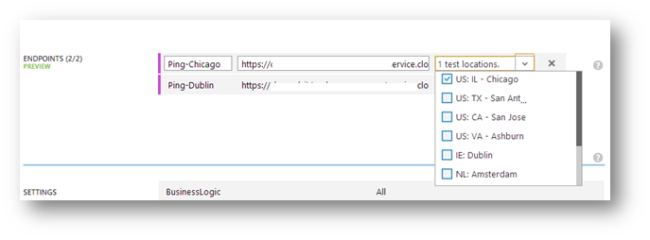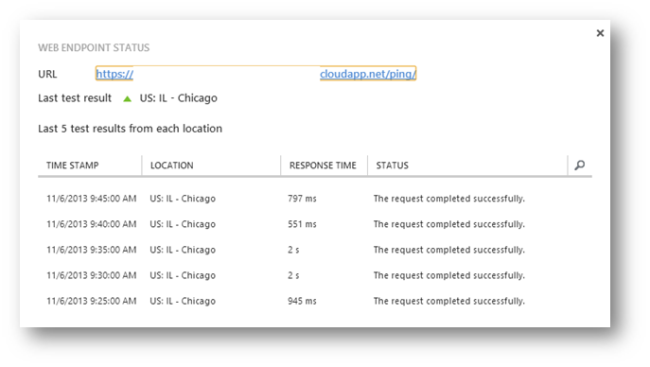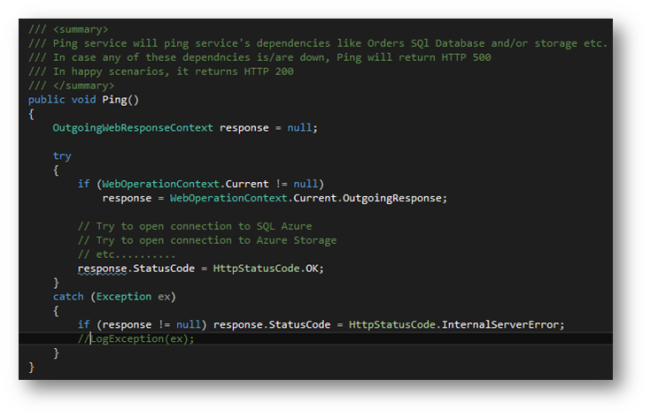Came across this cool feature on Windows Azure Management Portal called “Endpoint Monitoring”. The feature is still in preview, but worth giving a shout-out. Azure Org lately has hit this nice momentum of releasing features one after the other. They initially release the feature as preview and once it stabilizes, once enough hands are dirty and issues are ironed out, they GA it. This is a right way of releasing features to production, in my opinion.
Endpoint Monitoring, as the name suggests monitors if your web service/web site endpoint is up or not. The idea is, you provide an endpoint to Azure configuration and they call back that endpoint periodically and maintain the log for the same. The good thing is, you can make Azure call back your endpoint from different datacenters across the geography. This helps in scenarios where the endpoint is up in let’s say Chicago DC, but is down in Dublin.
Endpoint monitoring lets you monitor the availability of HTTP or HTTPS endpoints from geo-distributed locations. You can test an endpoint from up to 3 geo-distributed locations at a time(for now). A monitoring test fails if the HTTP response code is greater than or equal to 400 or if the response takes more than 30 seconds. An endpoint is considered available if its monitoring tests succeed from all the specified locations.
In Configuration tab of your service/website on Azure management portal, you will see the Endpoint Monitoring section.
As you see above, two endpoints have been configured called Ping-Chicago, Ping-Dublin. This means whichever endpoint you provide there would be called back periodically from Chicago and Dublin.
The results of the endpoint monitoring are shown on the Dashboard as below:
The detailed log can be found by clicking on the endpoint hyperlink
A typical ping endpoint code should ping all the dependencies the service relies on. E.g. if service uses a SQL Azure database, Azure Storage etc. then your ping endpoint should call these dependent endpoints and return HTTP 200 if good and HTTP 500 if bad. Here is a simple code that can be used in your SOAP/REST service as the ping method.
Know it. Learn it. Love it.



